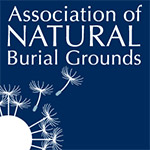
Woodland Trees
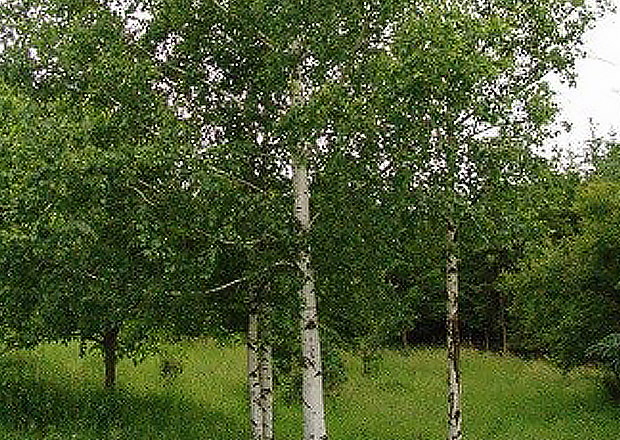
Silver Birch
The silver birch is a striking medium-sized deciduous tree, typically reaching 15-25m tall and a crown of arched branches with drooping branchlets. The bark is white, often with black diamond-shaped marks or larger patches, particularly at the base. The flowers are wind-pollinated catkins, produced before the leaves in early spring which, after pollination change colour to a dark crimson. Silver birch provides food and habitat for more than 300 insect species. Woodpeckers and other hole-nesting birds often nest in the trunk, while the seeds are eaten by siskins, greenfinches and redpolls.
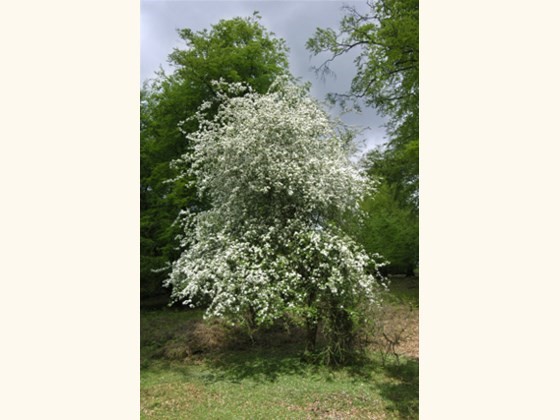
Crab Apple
Malus Sylvestris
Mature trees grow to around 10m in height and can live for 100 years. They have an irregular, rounded shape and a wide spreading canopy. With greyish brown, flecked bark, trees can become quite gnarled and twisted especially in exposed areas and the twigs often develop spines. This ‘crabbed’ appearance may have influenced its common name, ‘crab apple’.
The brown, pointed leaf buds form on short stalks and have downy hair on their tips, followed by glossy, oval leaves which grow to a length of 6cm and have rounded teeth along the edges. In Spring, the sweetly scented blossom provides an important source of early pollen and nectar and attracts bees and other insects. The flowers develops into small, yellow/green apple-like fruits which are eaten by birds and small mammals.
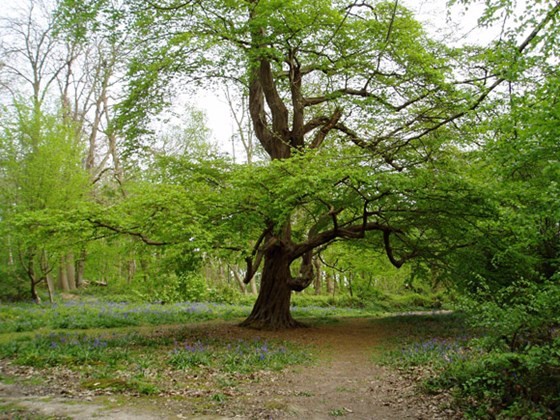
Hornbeam
Often confused with Common Beech the bark is pale grey with vertical markings, sometimes with a short, twisted trunk which can develop ridges with age. Twigs are brown-grey and slightly hairy. Mature trees can reach a height of 30 metres and live for over 300 years. Leaves are similar in shape to Beech leaves – oval, toothed, with pointed tips but are smaller and more deeply furrowed than Beech.
Both male and female catkins are found on the same tree and after pollination by wind, female catkins develop into papery, green, winged fruits known as samaras. In Autumn these distinctive seeds hang in tiered clusters and provide food for finches, tits and small mammals, and the leaves turn golden yellow to orange before they fall.
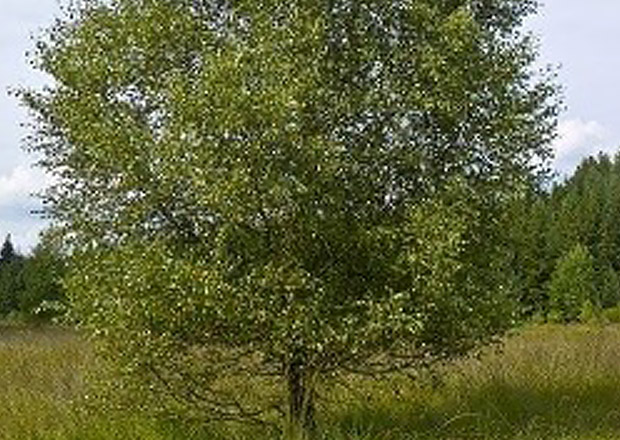
Downy Birch
Downy birch is a deciduous broad-leaf tree native to the UK and northern Europe and northern Asia.
Mature trees can reach 30m in height, forming a light canopy with elegant, drooping branches. Trees are more upright than silver birches and the bark is browner in colour with more obvious horizontal grooves. The leaves are triangular in shape but more rounded at the base than silver birch leaves and the leaf stalks are downy, as opposed to hairless on silver birch.
Downy birch is monoecious, meaning both male and female flowers (catkins) are found on the same tree, from April to May. Male catkins are long and yellow-brown in colour, and hang in groups of two to four at the tips of shoots, like lambs’ tails. Female catkins are smaller, short, bright green and erect. After successful pollination (by wind), female catkins thicken and change colour to a dark crimson. Masses of tiny seeds are borne in autumn, which are dispersed by wind.

Wild Cherry
Prunus Avium
Prunus Avium, more commonly known as Wild Cherry Tree, is a mid-sized ornamental tree, prized for its profusion of stunning spring blossom and good autumn colour. Long-lived and highly decorative, this cherry tree is a great candidate for a specimen tree.
Often confused with Prunus Avium Plena, which is the double-flowering variety, this cultivar is as dazzling as its close relative. In mid-spring, the crown of this showy tree is enveloped by rounded clusters pure white blossoms. The plethora of 5-petalled flowers stays on the tree for several weeks, offering interest and attracting pollinators. The clusters of delicate flowers are followed by fruit, reddish-yellow and rounded, turning to deep, dark shades of red as it ripens. Although edible, the Wild Chery Tree fruits are not as sweet and palatable as the cultivated varieties of Prunus Avium, but they are favoured by birds and small wildlife. In the autumn, the broad, oval, serrated leaves turn from green to brilliant shades of red and orange.
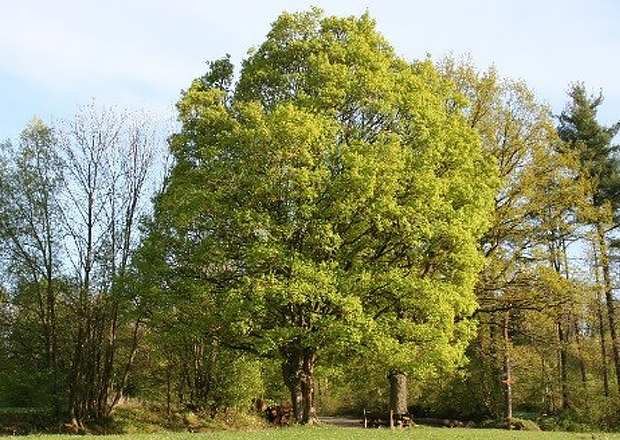
Field Maple
Common Field Maple is native to the UK and most of Europe. It is a medium-sized deciduous tree reaching 15-25 m tall, with a trunk up to 1 m diameter, with finely fissured, often somewhat corky bark. The shoots are brown, with dark brown winter buds. The leaves are in opposite pairs, 5-16 cm long and 5–10 cm broad. The flowers are produced in spring at the same time as the leaves open and are insect pollinated. The fruit is a samara with two winged seeds aligned at 180º, each seed 8-10 mm wide, flat, with a 2 cm wing. The flowers are small, yellow-green, cup-shaped and hang in clusters. After pollination by insects, flowers develop into large, winged fruits, which are dispersed by wind.
Field maple is attractive to aphids and therefore their predators, including many species of ladybird, hoverfly and bird. The leaves are eaten by the caterpillars of several species of moth, including the sycamore moth, the mocha, the maple pug, the small yellow wave, the prominent and the maple prominent. The flowers provide nectar and pollen for bees and birds, and small mammals eat the fruits.
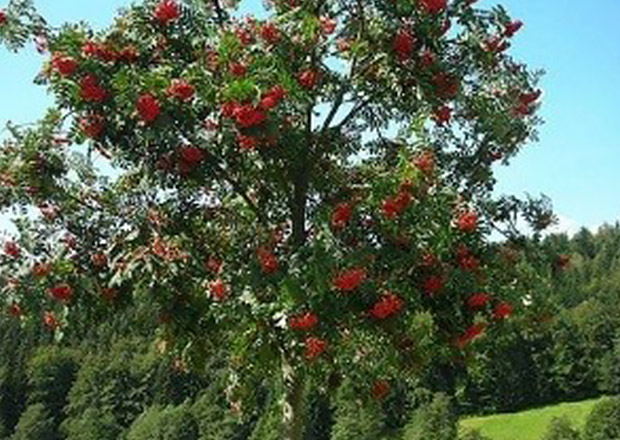
Rowan
Rowan is also known as mountain ash and is native to the UK and northern and western Europe. It is commonly found in the wild, particularly in the highlands of Scotland, but it is also widely planted as a street or garden tree. Mature trees can grow to 15m and can live for up to 200 years. The bark is smooth and silvery grey, and leaf buds are purple and hairy. Leaves are pinnate (like a feather), comprising five to eight pairs of leaflets, plus one ‘terminal’ leaflet at the end. Each leaflet is long, oval and toothed. Rowan flowers are borne in dense clusters, each one bearing five creamy white petals. After successful pollination by insects, they develop into scarlet fruits. The seeds are dispersed by birds.
The leaves are eaten by caterpillars of a number of moths, including the larger Welsh wave and autumn green carpet. Caterpillars of the apple fruit moth feed on the berries.
Flowers provide pollen and nectar for bees and other pollinating insects, while the berries are a rich source of autumn food for birds, especially the blackbird, mistle thrush, redstart, redwing, song thrush, fieldfare and waxwing.

Hazel
Hazel is a deciduous broad-leaf tree native to the UK. Hazel is often coppiced, but when left to grow, trees can reach a height of 12m, where it can live for up to 80 years (if coppiced, hazel can live for several hundred years). It has a smooth, grey-brown, bark, which peels with age, and bendy, hairy stems. Leaf buds are oval, blunt and hairy, and the leaves are round to oval, doubly toothed, hairy and pointed at the tip. Leaves turn yellow before falling in autumn.
The yellow male catkins appear before the leaves and hang in clusters, from mid-February. Female flowers are tiny and bud-like with red styles. Once pollinated by wind, the female flowers develop into oval fruits, which hang in groups of one to four. They mature into a nut with a woody shell surrounded by a cup of leafy bracts (modified leaves).
Hazel leaves provide food for the caterpillars of many moths, including the large emerald, small white wave, barred umber and nut-tree tussock. Hazel has long been associated with the dormouse. Not only are hazel nuts used by dormice to fatten up for hibernation, but in spring the leaves are a good source of caterpillars, which dormice also eat. Hazel nuts are also eaten by woodpeckers, nuthatches, tits, wood pigeons, jays and a number of small mammals. Hazel flowers provide early pollen as a food for bees. The trunks are often covered in mosses, liverworts and lichens, and the fiery milkcap fungi grows in the soil beneath.
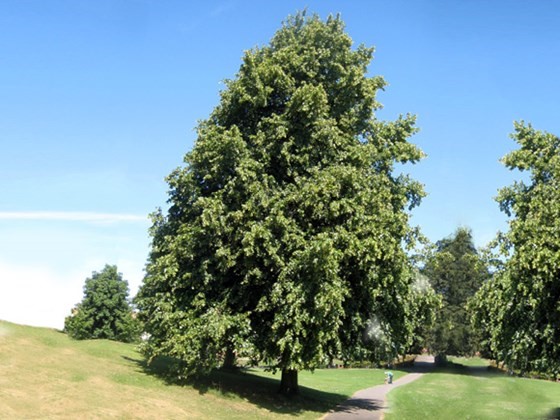
Lime
Common lime is a deciduous broad-leaf tree, native to the UK and parts of Europe. A hybrid between small-leaved and large-leaved lime, common lime has characteristics of both species. The bark is pale grey-brown and irregularly ridged, with characteristic large burrs and leaf shoots at the base of the tree. Twigs are slender and brown, although they become red in the sun. Leaf buds are red, with one small scale and one large scale, resembling a boxing glove, and form on long leaf stalks. The leaves are dark green in colour, heart-shaped and flimsy and measure 6–10cm in length. They have a lopsided, lobed leaf base and tufts of white hairs in vein axils, and fade to a dull yellow before falling in autumn.
Lime leaves are eaten by the caterpillars of many moth species, including the lime hawk, peppered, vapourer, triangle and scarce hook-tip moths. They are very attractive to aphids, providing a source of food for their predators, including hoverflies, ladybirds and many species of bird (bees also drink the aphid honeydew deposited on the leaves). The flowers provide nectar and pollen for insects, particularly bees.
Long Term Management
All purchased trees will be planted in the tree planting season (typically between mid-November to late-March) to allow the best chance of success.
Any planted trees will be guaranteed for 5 years, during which time any failing trees will be replaced.
All trees will be maintained by the Estate in accordance with good arboricultural practice and British Standards, which may include thinning and or trimming works.



